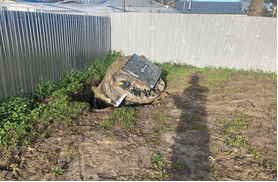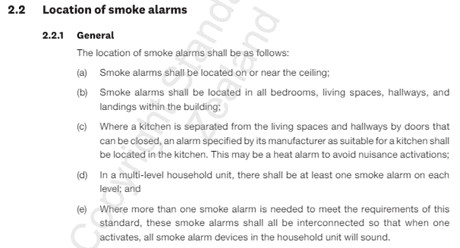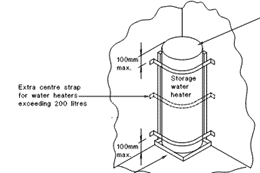Welcome to another newsletter from the Carterton District Council regulatory team. We would love to hear your feedback, if you find this useful or what other topics you may find useful. You can email buildingadmin@cdc.govt.nz with your comments and feedback.
Council continues to be kept busy with Building Warrant of Fitness issues and an increase in the number of applications for Certificates of Acceptance.
We have had an increase in applications for CCC’s for old projects, many where the consents were issued prior to 2004. These are often identified during the sale process or when we are contacting people about other matters, and identify older consents on their property that have not had CCC issued.
Latest Stats
| Number of consents | Value of building work | Number of consents | Value of building work | Number of consents | Value of building work | Number of consents | Value of building work | |
| May 2023 | May 2023 | May 2024 | May 2024 | June 2023 | June 2023 | June 2024 | June 2024 | |
| TOTAL | 14 | 3,137,500 | 17 | 1,954,500 | 20 | 1,572,850 | 17 | 2,087,700 |
Unconsented Works
The Building Act allows that where work has been done without consent, an owner may apply for a Certificate of Acceptance (COA) for that work. This is basically a late consent.
When applying for a COA, you should provide detailed plans, specifications and supporting information as if it were a building consent. In addition, you should provide evidence to show that the work has been completed appropriately. This could include photos of the work, copies of reports from the people who did the work or maybe supervised the work.
It is important to note that undertaking work without consent is an offence under the Building Act. Although Council will try to work out a solution, we retain the right to undertake enforcement action.
Where work has been undertaken by people who should know that a consent would have been required, Council will consider laying a complaint with for example the LBP board or The Plumbers Gasfitters and Drainlayers board.
We suggest to the trades etc. that if you are unsure if there is a consent, ring Council and confirm. Typically the giveaway is if you ask to see the consent and one isn’t produced then you shouldn’t be doing the work.
Tiny Houses
We regularly receive queries regarding tiny houses.
It is important to recognise that they are still a house, albeit maybe a bit smaller than others. This means the Building Code applies in exactly the same way as if it were a standard house.
Guidance from the Ministry, and case law through the courts, explains that if it looks like a house, and you intend to use it as you would a house, and live in it like you would a house, then it is a house regardless of the number of wheels.
In most cases this means that a consent will need to be obtained from the Council where the house is being constructed and you will need to apply for a second consent to place the building on foundations and connect services such as drains etc. to the house.
MBIE News
Making it easier to build
You may be aware that Central Government is looking at various ways to bypass the approval and checking that Councils currently do for the purposes of speeding up consenting times and reducing building costs. This is part of trying to fast track the rate at which houses are built to increase housing stock.
We suggest that you join up to MBIEs various update emails to keep up with a current rapid rate of consultation and soon rapid changes. You can subscribe here
MBIE Consultation
MBIE have a number or workstreams at the moment that have either recently been consulted on or are currently being consulted on.
Council encourages you to keep up to date with MBIE’s direction and where you are interested or have a particular view, provide feedback.
Much of the proposed changes are around the principle of “making it easier to build.” Here’s some further information– MBIE will welcome feedback.
Granny Flats
You may be aware that MBIE are currently consulting on proposed changes to allow “granny flats” to be constructed without Building Consents. This consultation also includes proposed changes to District Plans to enable these types of buildings to be built far more cheaply and quickly.
This appears part of Central Governments general approach to bypass Councils regulatory oversight (and protection) to provide housing at a faster and cheaper rate.
This is the link to the consultation. Council would encourage you to have a read and make a submission if you are interested. Consultation closes early August.
Compliance Pathways
Compliance pathways are the way in which someone can show that their product or system will comply with the Building Code. Typically, acceptable solutions, alternative solutions and verification methods are the way in which solutions are detailed.
From time-to-time MBIE use the term “deemed to comply” however this has no legal status in New Zealand currently. There are other options such as Codemark, Mulituse approvals, and more recently BuiltReady, which is an accreditation scheme. These systems are intended to speed up the consenting process.
Consultation recently closed on a scheme where product certification, standards and verification systems from overseas jurisdictions could be used to more quickly show Building Code compliance for imported products in New Zealand. Part of this is intended to make it easier for suppliers and importers to get their products and systems into buildings in New Zealand. In Central Governments view this will enhance competition and drive prices down and speed up consenting times.
For example, a company may import a roofing product that complies with a European Standard. If that is a recognised standard, then it can be more readily approved as part of a building consent approval, where consent is required. This would increase pressure on New Zealand based suppliers and manufacturers to reduce material costs to compete with the overseas products.
MBIE building levy
Recently there were changes to the Building Levy (often referred to as the MBIE levy).
This changed the threshold at which the levy becomes payable to $65,000. This will give applicants a small saving on consenting costs.
Please note this didn’t change the Building Research Levy (known as the BRANZ levy). This threshold remains unchanged
Plumbing and drainage inspections
We continue to have issues with plumbers and drainlayers undertaking work without consent and backfilling drains and tanks etc. without inspection and/or not following manufacturer’s instructions. Recently we came across the situation pictured. The manufacturers required concrete around the base however it was backfilled with soil.

If you are asked to undertake work, ask to see the building consent first. You are obliged to follow the consent, so if one isn’t available, please contact Council and ask if a consent has been issued.
Where council become aware of work being done without consent, we will lay a complaint with the plumbers, gasfitters and drainlayers board. Where work is covered or backfilled without approval, we will refuse to issue the CCC and you will need to work with the owner to resolve the matter.
Changes to Acceptable Solutions
MBIE continue to review and in some cases revise acceptable solutions in the context of the Building Code review programme. We seldom see the Building Code itself change.
F7 Warning Systems
Recent changes to F7/as1 removes the details associated with fire alarms and refers to the C code clauses. For typical housing this relates to C/as1.
Consents for typical residential type dwellings obtained after 1 November 2024 will need to include a type 1 fire alarm described as:
A Type 1 is a smoke alarm or multiple interconnected smoke alarm devices, each containing a smoke detector and an alarm sounding feature. The system shall comply with NZS 4514. Smoke alarms shall be installed in every household unit or suite of risk group SH.
NZS4514 is a sponsored standard and can be downloaded for free here: https://www.standards.govt.nz/shop/nzs-45142021
The standard provides the following:

Lead in plumbing products
Changes are coming to Acceptable Solution G12/AS1 to limit the maximum allowable content of lead permitted in plumbing products. This will limit the maximum lead content of any product that contains copper alloys, intended for use in contact with potable water for human consumption. This includes products such as pipe fittings, valves, taps, mixers, water heaters, and water meters. The transition period for this change will end on 1 September 2025. (Currently under review).
Our expectation is that taps etc. sourced from reputable New Zealand companies will be easily able to provide information on the lead content of products they supply. This may become tricky where clients are importing products from overseas and verification of lead content is not readily available. This may well be complicated by the new regime associated with having to accept International Standards.
For designers we suggest you specify taps by brand and include the lead content details in the application. If this changes on-site, then this will need to be dealt with likely as a minor variation. If the lead content cannot be verified, then the variation will not be approved.
Restraining water cylinders
MBIE have updated the drawings for supporting water tanks by adding an additional strap for water cylinders over 200 litres or where the tank is greater than 12m above finished ground level.

Water temperature
The delivered hot water temperature at the outlet of any sanitary fixture used for personal hygiene (showers, baths, hand basins and bidets) shall not exceed:
a) 45°C for early childhood education and care centres, schools, aged-care homes, institutions for people with psychiatric or physical disabilities, hospitals, and
b) 50°C for all other buildings.
It is noted that for licensing purposes for early childhood education and care centres, the Ministry of Education requires the temperature of water delivered from taps that are accessible to children does not exceed 40°C.
For consents obtained after 1 November 2024 you will need to show compliance with these temperatures. In most cases this is likely an adjustment to a tempering valve. In the case of instantaneous water heaters, where these cannot be adjusted, you may need to add a tempering valve. For cylinders, you will still need to ensure that the temperature inside the cylinder stays over 60°C to prevent the growth of Legionella bacteria.
Useful Links
- Exemplar Compliance Schedule [PDF]
- Building Performance: Minor variations [PDF]
- Determination 2023/043: An authority’s decision to grant a minor variation to a building consent for a change to external wall cladding [PDF]
- Plumbers, Gasfitters and Drainlayers Board website [https://www2.pgdb.co.nz/public-register]
